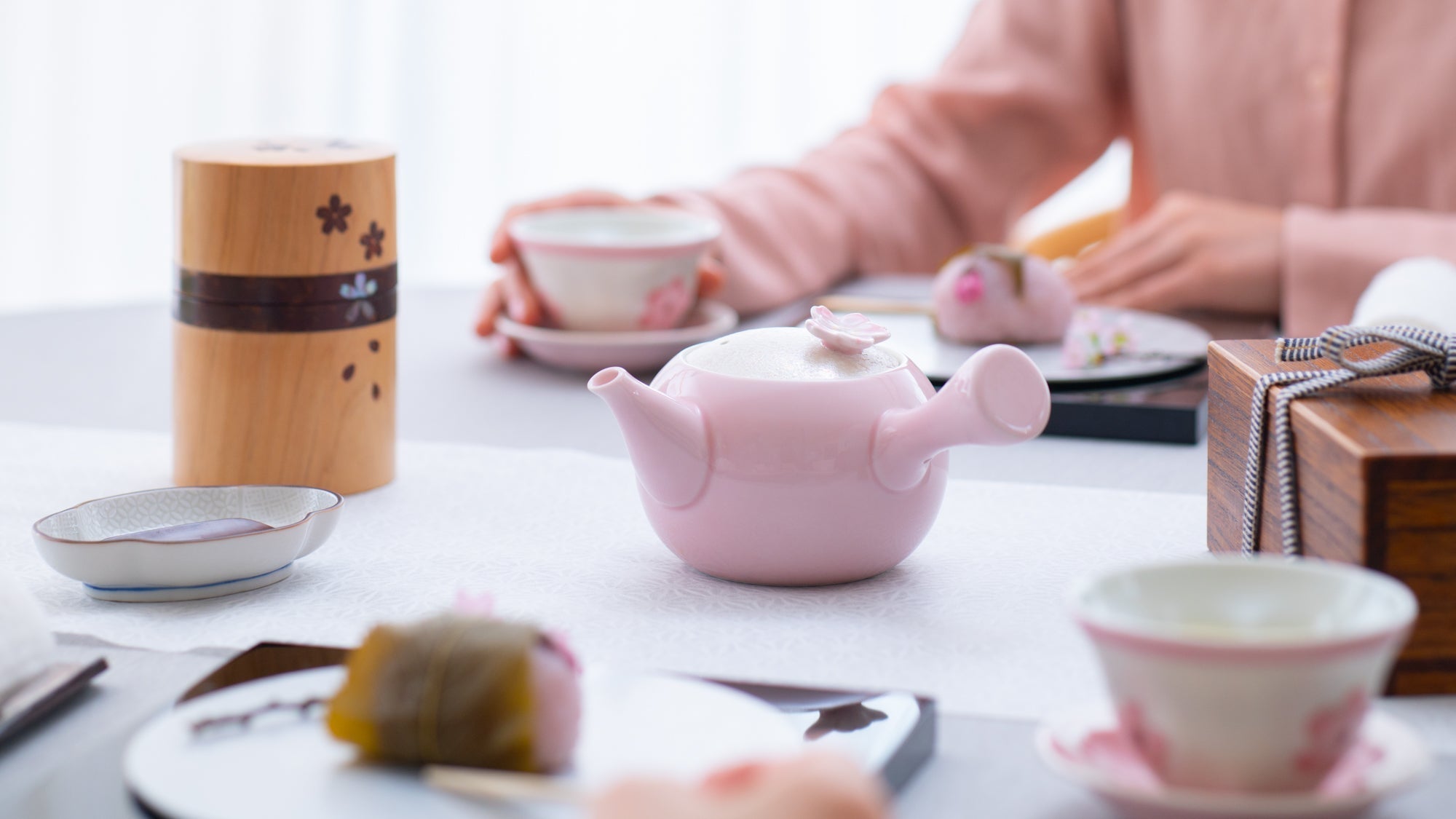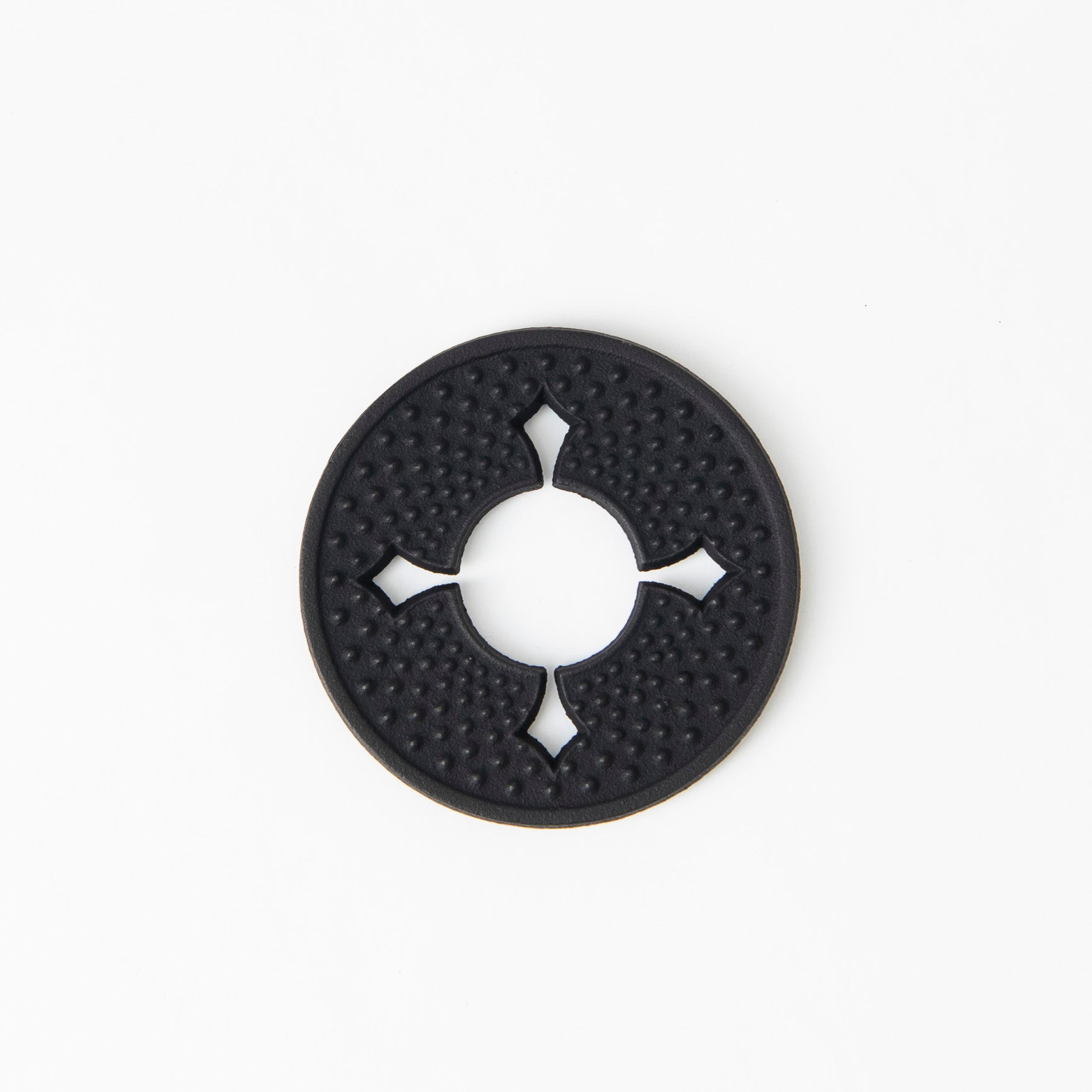
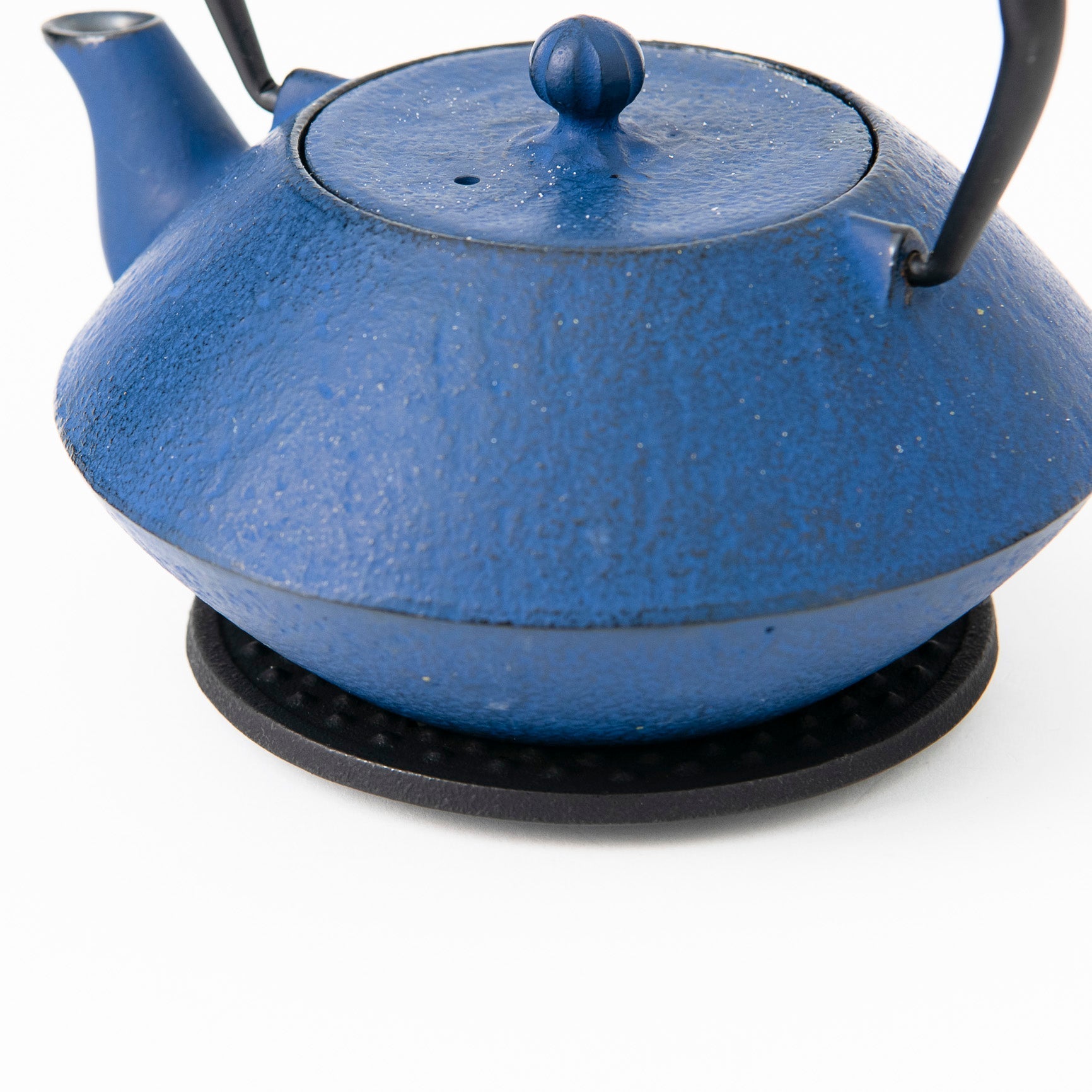
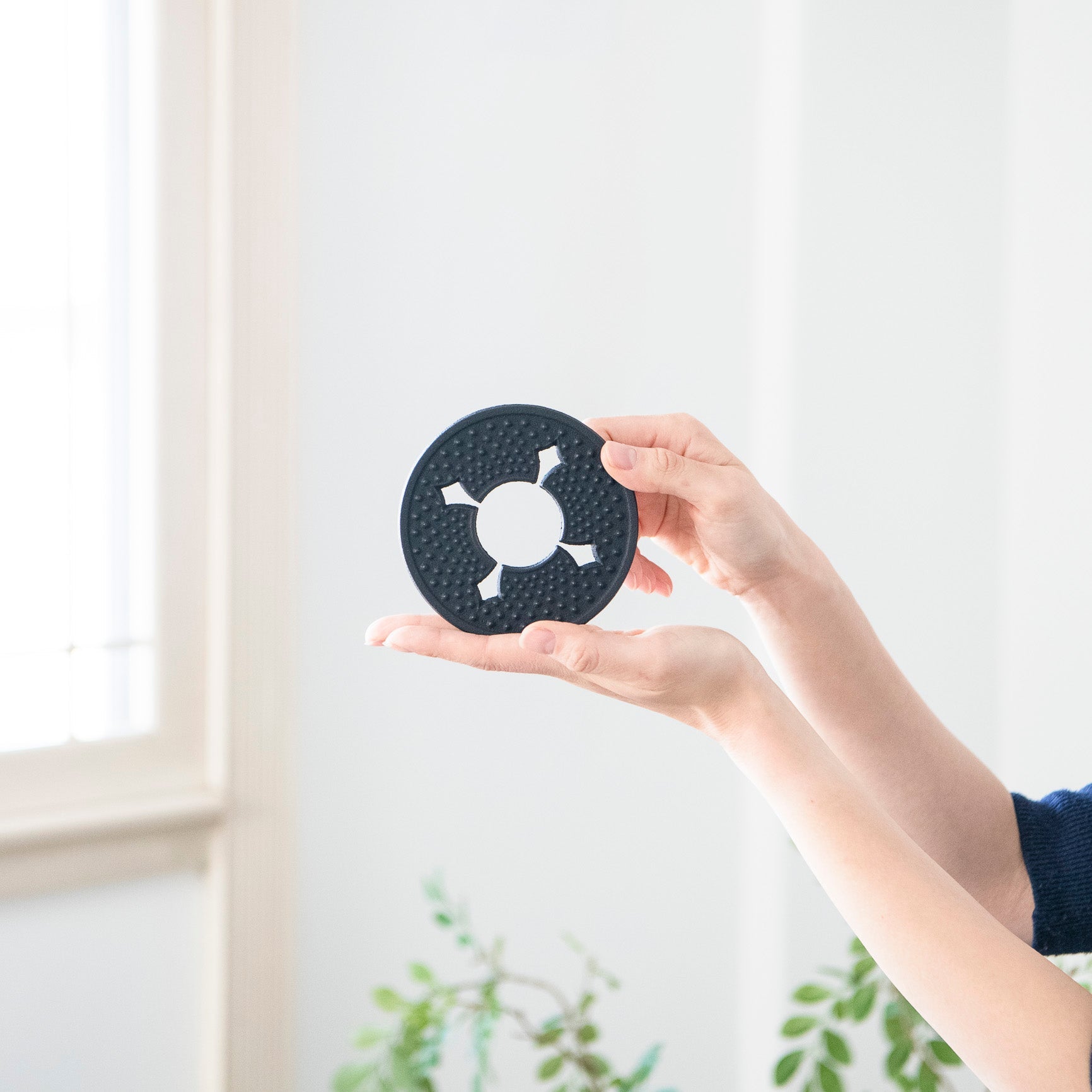
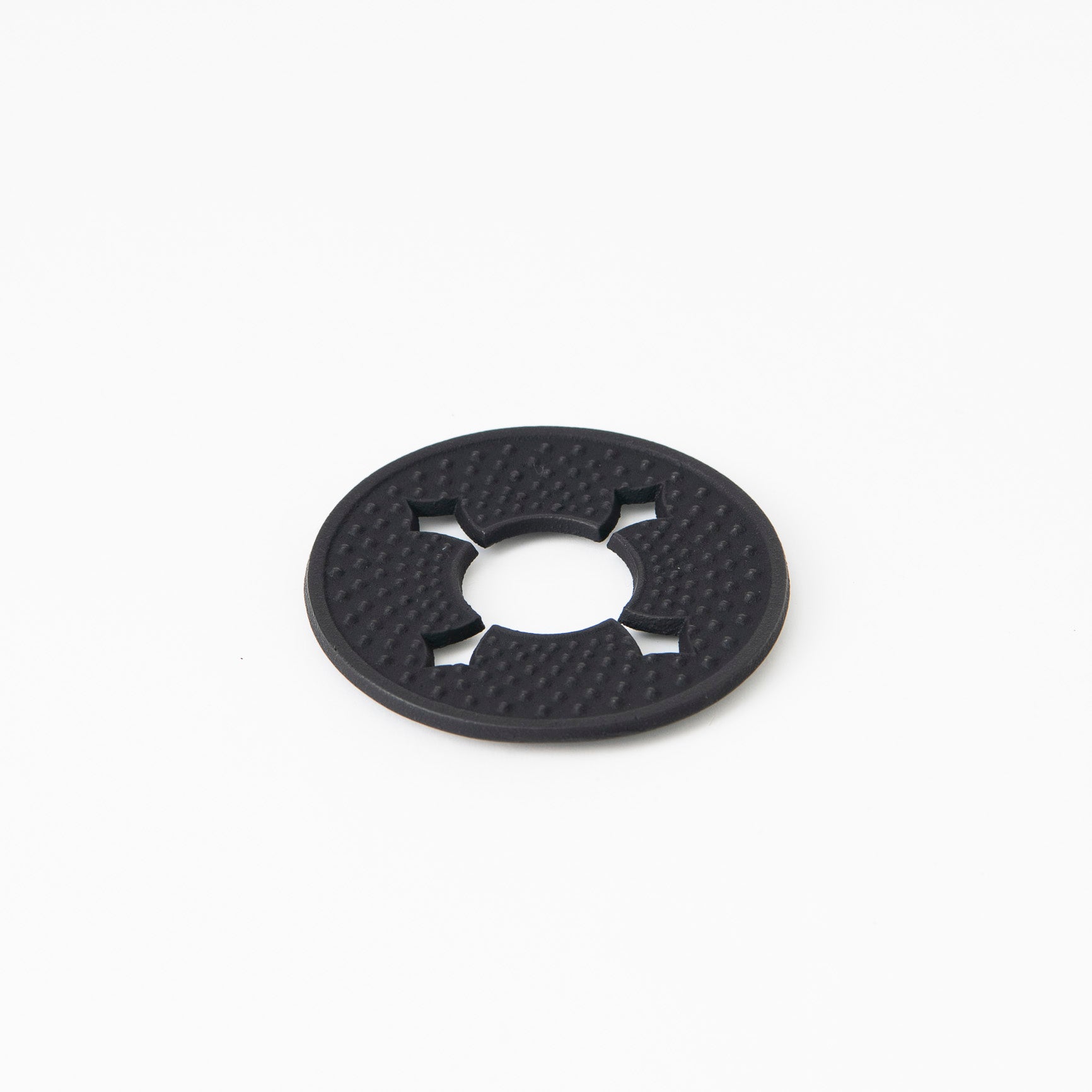
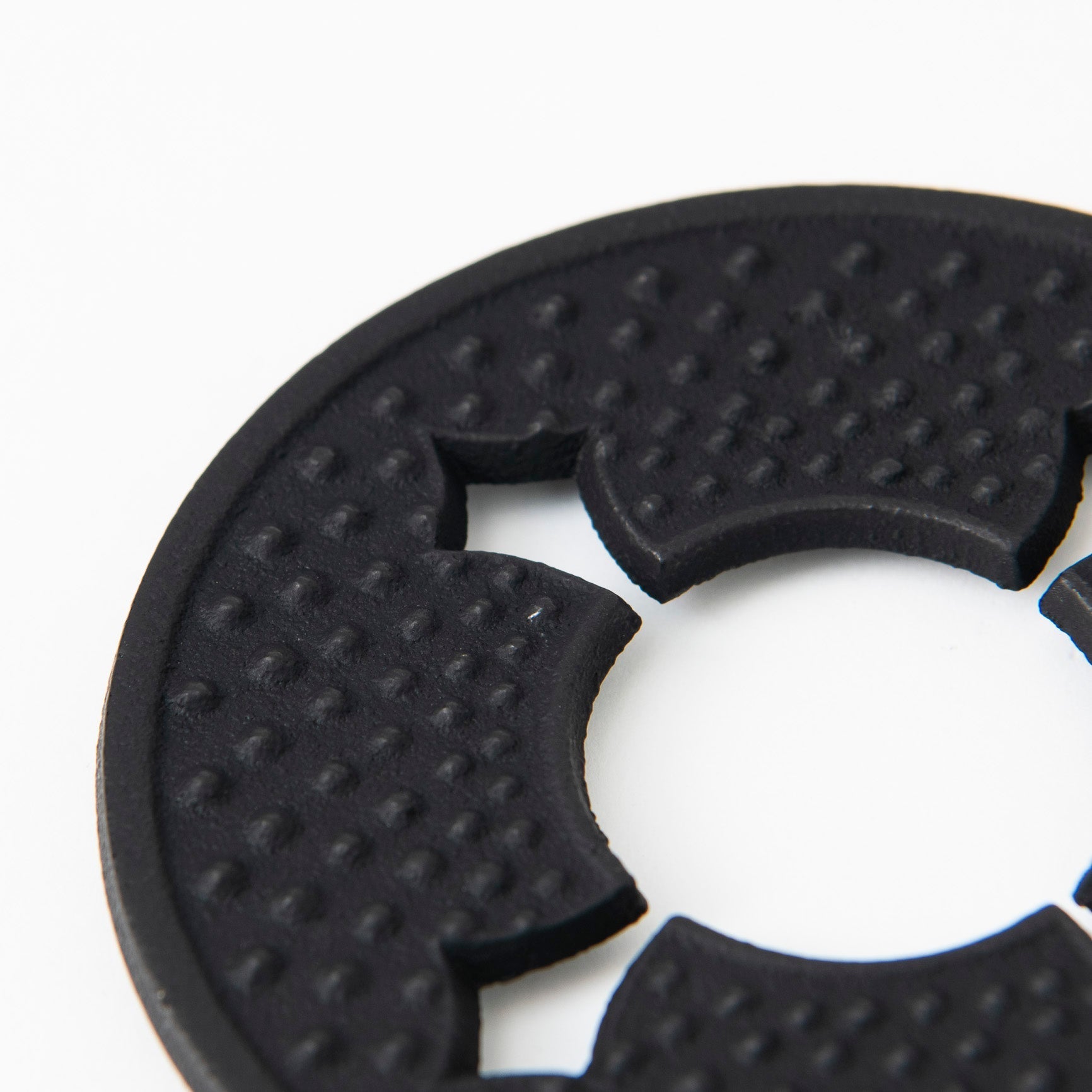
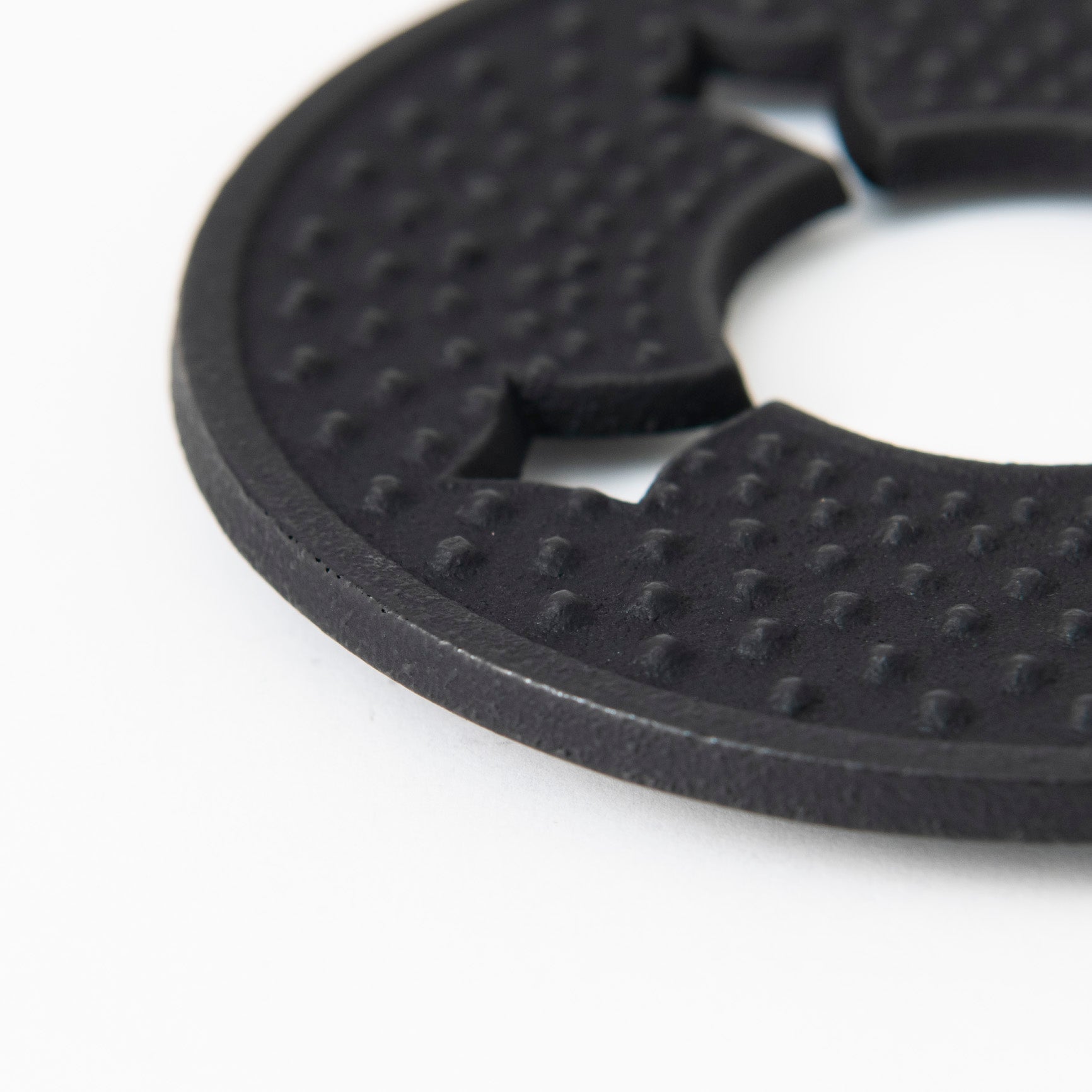
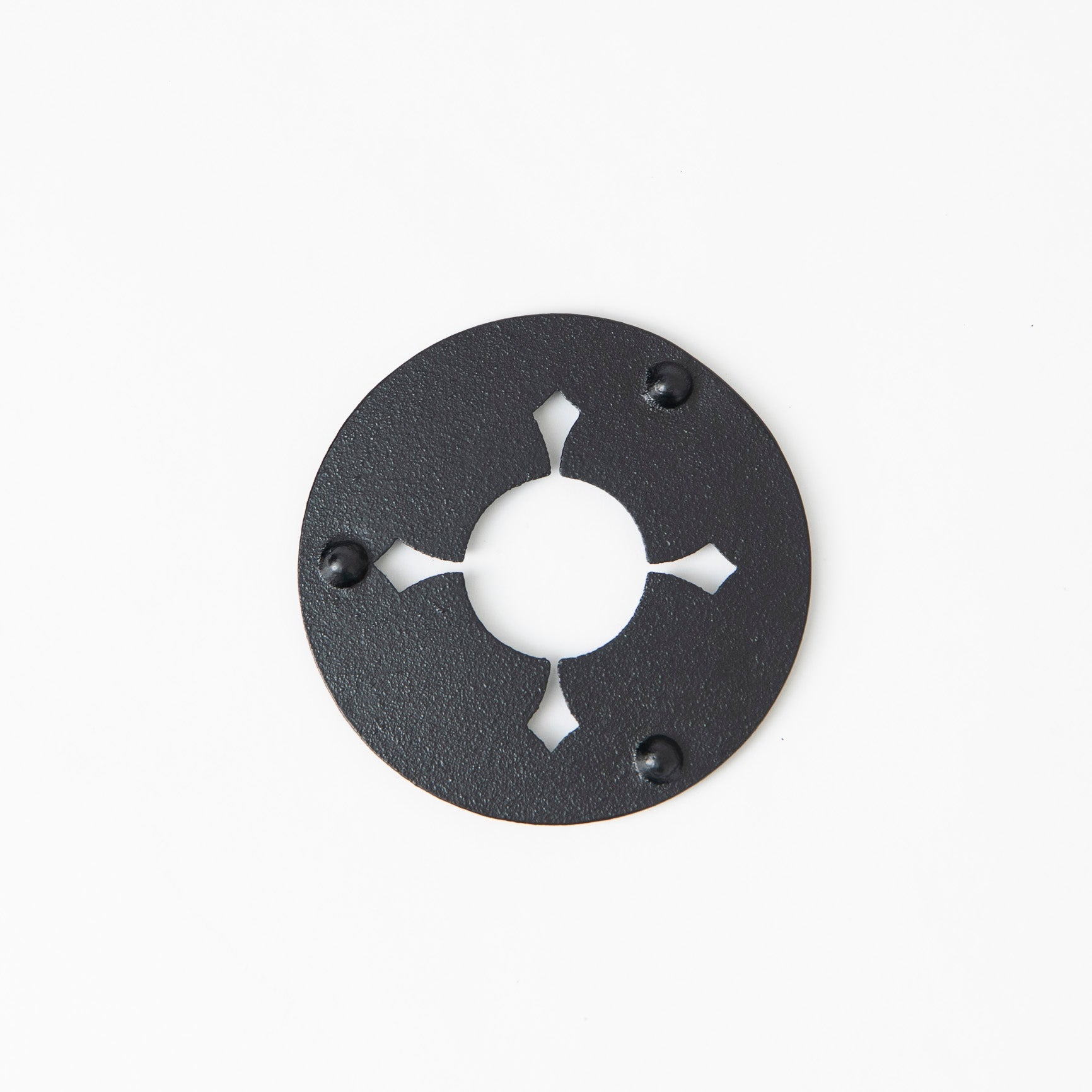
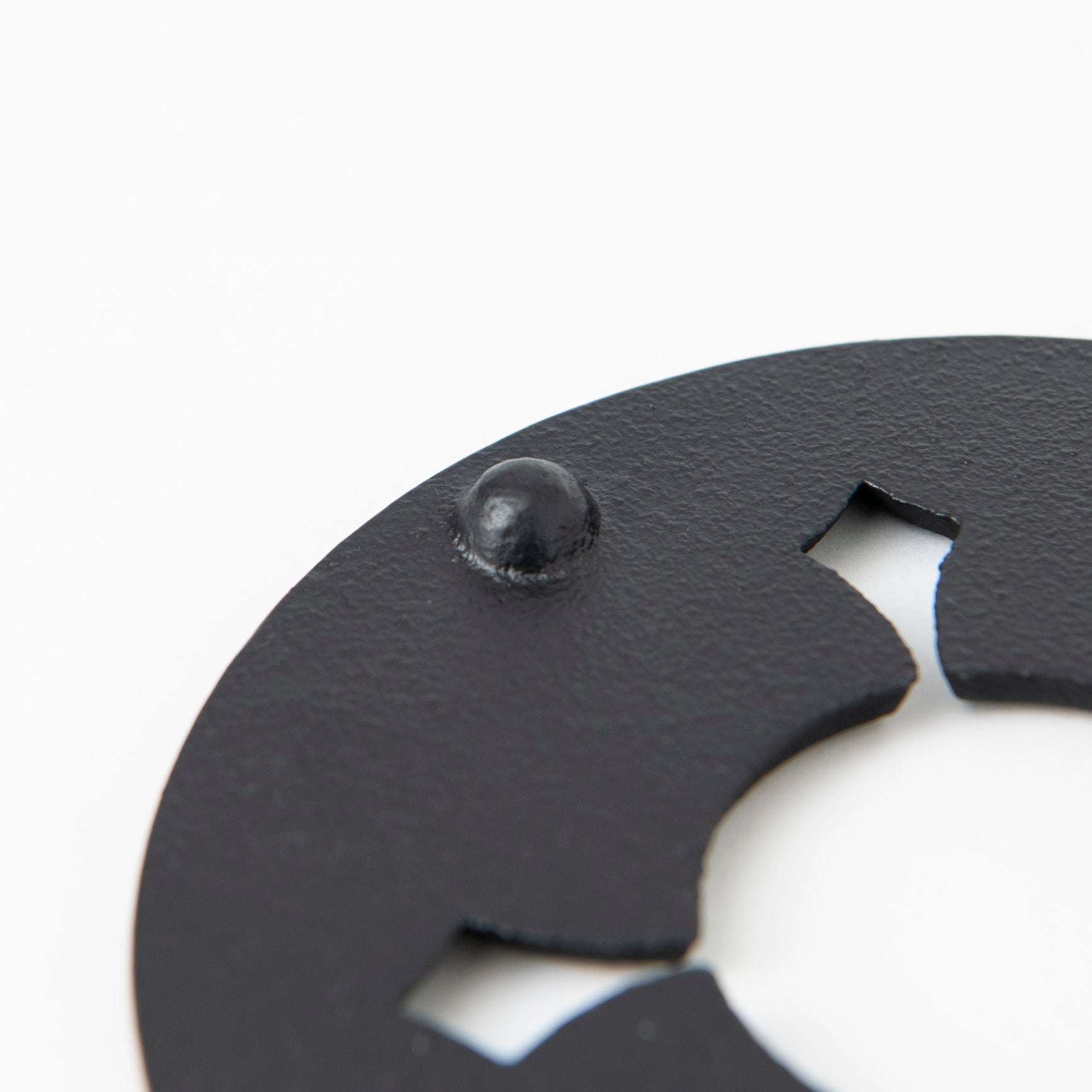
Tsurugi-shape Inspired Trivet
Estimated Shipping Widget will be displayed here!
This is a cast iron trivet with a Tsurugi (sword) motif, made of Nambu ironware in Morioka City, Iwate Prefecture in the Tohoku region. It is characterized by a row of small protrusions called "Arare," which is a typical pattern of Nambu ironware.
It is said that the "Arare" pattern is an expression of a scene where hail falls.
The hazy landscape looks like a drizzle with smaller grains than rain. This is expressed by the fine dots. The dots are hand-applied to the mold one by one.
This is a must-have item to protect your table from damage, and since it is small, it is recommended to use it together with the teapot.
Of course, you can also use it with your own teapot or ovenware.
DETAILS
| Quantity | 1 |
| Size | D 10.7 cm (4.2 in) x H 1 cm (0.4 in) |
| Material | Cast Iron |
| Microwave | No |
| Dishwasher | No |
Crafts
Nambu ironware, a representative of Japanese ironware, is a collective term for the pure iron casting crafts of the Mizusawa region and Morioka City area of Iwate Prefecture. The name comes from the fact that it was made in the area known as the Nambu domain in the past.
The appeal of Nambu ironware, which has been loved throughout the generations, is not only its simplistic beauty, but also its many functional merits of being durable and easy to use in daily life.
Choose options








Estimated Shipping Widget will be displayed here!
Trivets
A trivet, or pot holder, is an essential kitchen accessory that plays an integral part in protecting surfaces from high heat. We have carefully selected trivets in a variety of materials and sizes to match a wide range of cookware. A well-chosen trivet will not only protect your countertops, but will also add a pleasing look to your culinary space.
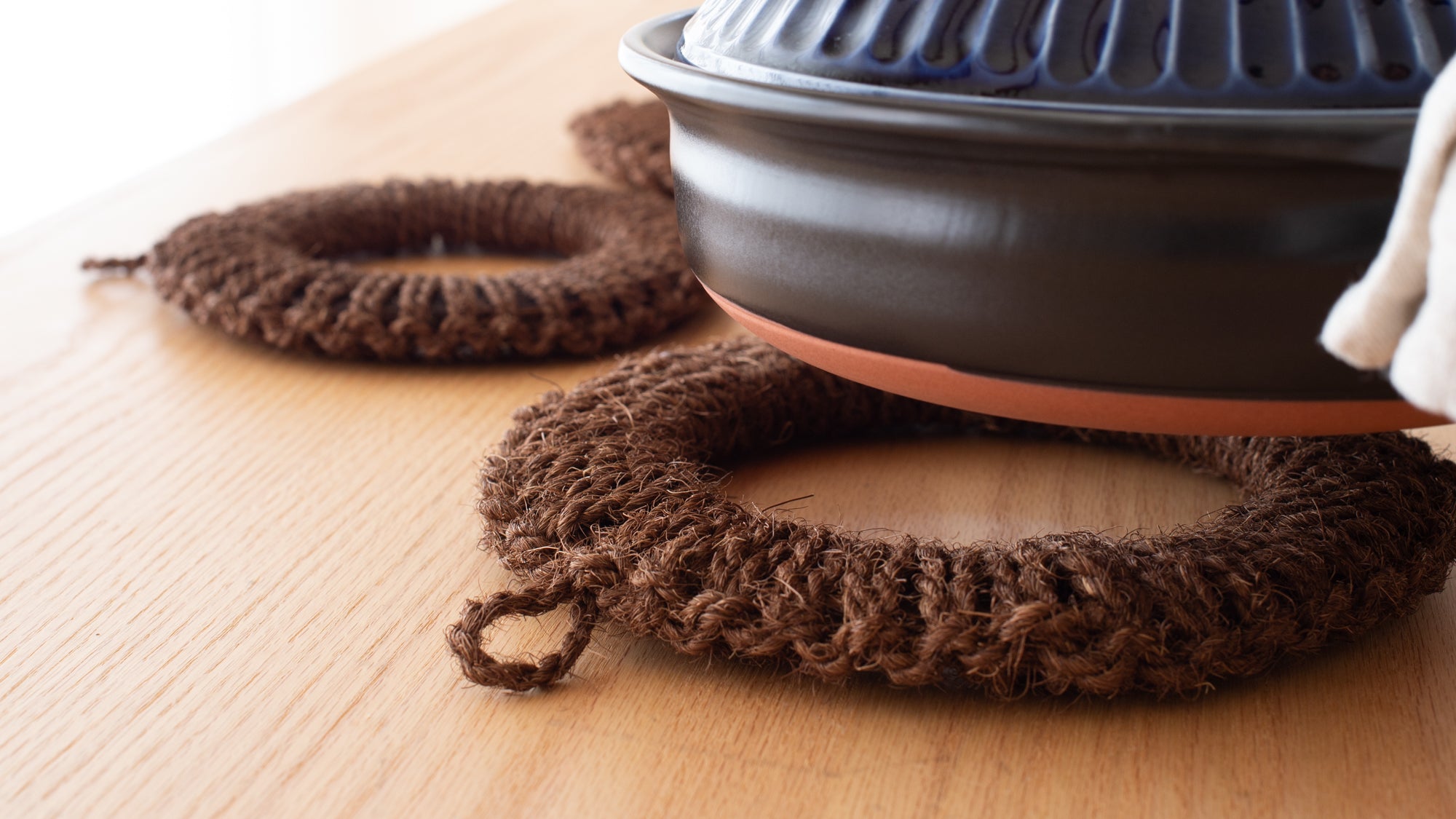
How to Care for Nambu Ironware

The Delicate Beauty of Sakura Pink Teaware
